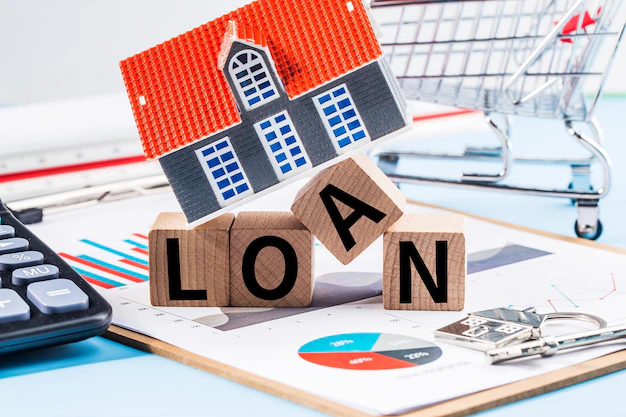Loans can help you achieve major life goals you couldn’t otherwise afford, like enrolled or purchasing a home. You will find loans for all sorts of actions, as well as ones will pay off existing debt. Before borrowing any cash, however, you need to understand the type of loan that’s suitable for your requirements. Listed here are the most common forms of loans as well as their key features:

1. Loans
While auto and home mortgages are designed for a unique purpose, personal loans can generally provide for what you choose. Some individuals use them commercially emergency expenses, weddings or do-it-yourself projects, as an example. Unsecured loans are usually unsecured, meaning they cannot require collateral. They may have fixed or variable interest rates and repayment relation to several months to many years.
2. Automobile financing
When you buy a vehicle, car finance allows you to borrow the price of the automobile, minus any deposit. The vehicle is collateral and could be repossessed if the borrower stops making payments. Car finance terms generally cover anything from Three years to 72 months, although longer loan terms have become more common as auto prices rise.
3. Student education loans
School loans can help buy college and graduate school. They are available from both the federal government and from private lenders. Federal student loans tend to be desirable given that they offer deferment, forbearance, forgiveness and income-based repayment options. Funded with the U.S. Department of your practice and offered as federal funding through schools, they sometimes do not require a credit assessment. Car loan, including fees, repayment periods and rates of interest, are the same for every borrower with the same type of loan.
School loans from private lenders, alternatively, usually have to have a appraisal of creditworthiness, every lender sets a unique car loan, interest rates and costs. Unlike federal student education loans, these loans lack benefits for example loan forgiveness or income-based repayment plans.
4. Home loans
Home financing loan covers the purchase price of your home minus any downpayment. The property serves as collateral, which can be foreclosed with the lender if home loan payments are missed. Mortgages are normally repaid over 10, 15, 20 or 30 years. Conventional mortgages are not insured by government departments. Certain borrowers may qualify for mortgages backed by gov departments just like the Federal Housing Administration (FHA) or Va (VA). Mortgages may have fixed interest rates that stay with the lifetime of the credit or adjustable rates that may be changed annually through the lender.
5. Home Equity Loans
A property equity loan or home equity line of credit (HELOC) allows you to borrow up to a percentage of the equity at your residence for any purpose. Home equity loans are quick installment loans: You receive a one time and pay it back as time passes (usually five to 3 decades) in once a month installments. A HELOC is revolving credit. Like with a card, it is possible to combine the credit line as required during a “draw period” and only pay the eye on the loan amount borrowed before draw period ends. Then, you typically have 2 decades to pay off the money. HELOCs are apt to have variable rates; hel-home equity loans have fixed interest levels.
6. Credit-Builder Loans
A credit-builder loan is made to help those with a low credit score or no credit profile enhance their credit, and could n’t need a credit assessment. The bank puts the credit amount (generally $300 to $1,000) right into a piggy bank. After this you make fixed monthly installments over six to 24 months. When the loan is repaid, you will get the money back (with interest, in some cases). Prior to applying for a credit-builder loan, guarantee the lender reports it on the major credit reporting agencies (Experian, TransUnion and Equifax) so on-time payments can improve your credit rating.
7. Consolidation Loans
A debt loan consolidation is a unsecured loan meant to repay high-interest debt, like cards. These loans will save you money if the monthly interest is gloomier compared to your current debt. Consolidating debt also simplifies repayment as it means paying only one lender as opposed to several. Paying off personal credit card debt having a loan can reduce your credit utilization ratio, improving your credit score. Consolidation loans might have fixed or variable interest levels along with a array of repayment terms.
8. Payday advances
One kind of loan to avoid could be the pay day loan. These short-term loans typically charge fees equal to apr interest rates (APRs) of 400% or more and has to be repaid in full because of your next payday. Available from online or brick-and-mortar payday lenders, these refinancing options usually range in amount from $50 to $1,000 and don’t require a appraisal of creditworthiness. Although payday cash advances are simple to get, they’re often hard to repay promptly, so borrowers renew them, resulting in new fees and charges along with a vicious loop of debt. Personal loans or bank cards are better options if you want money for an emergency.
What sort of Loan Has the Lowest Interest Rate?
Even among Hotel financing of the identical type, loan rates may differ based on several factors, like the lender issuing the loan, the creditworthiness from the borrower, the loan term and whether the loan is unsecured or secured. In general, though, shorter-term or unsecured loans have higher rates of interest than longer-term or secured personal loans.
For more information about Hotel financing go our new resource
